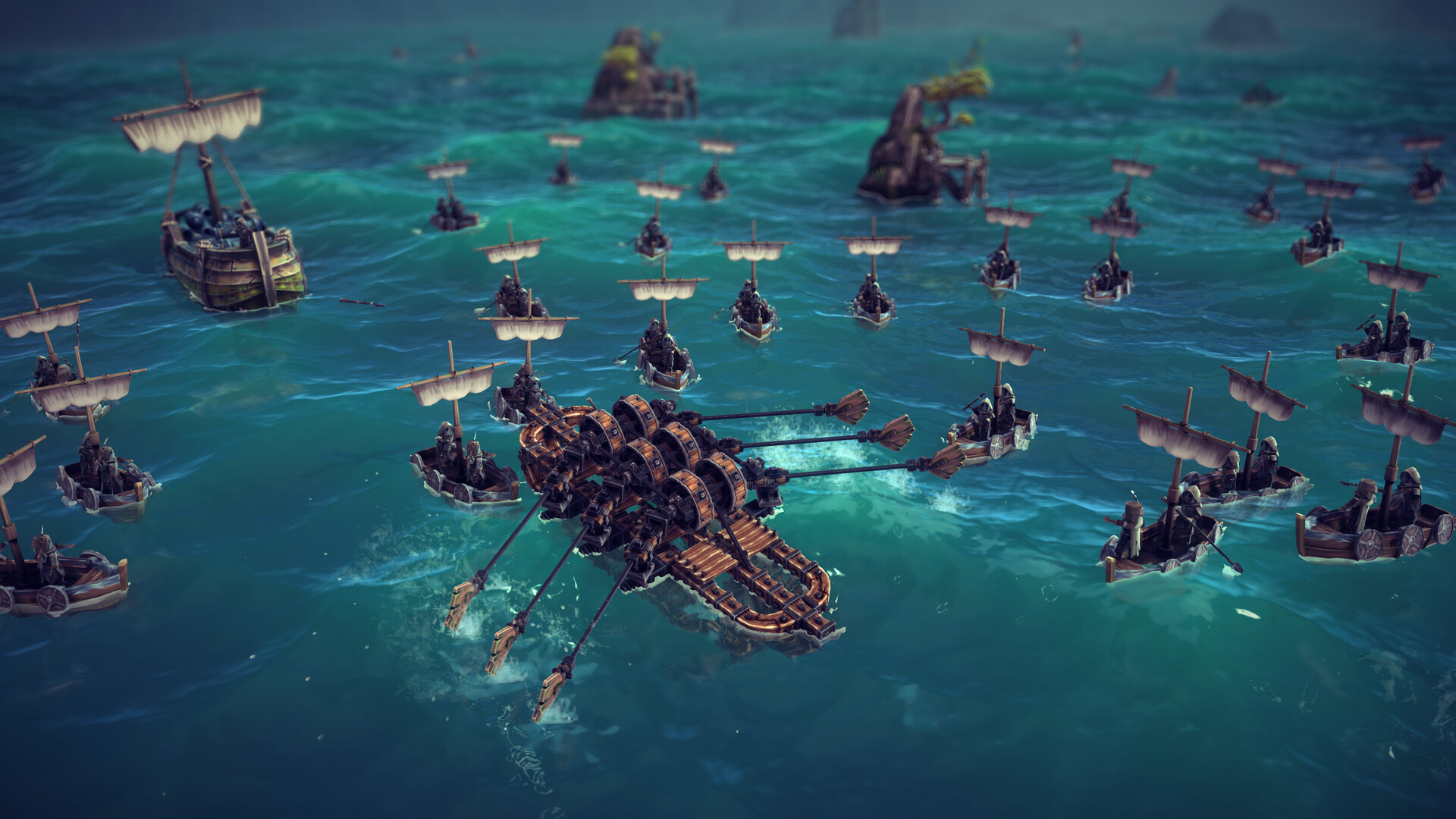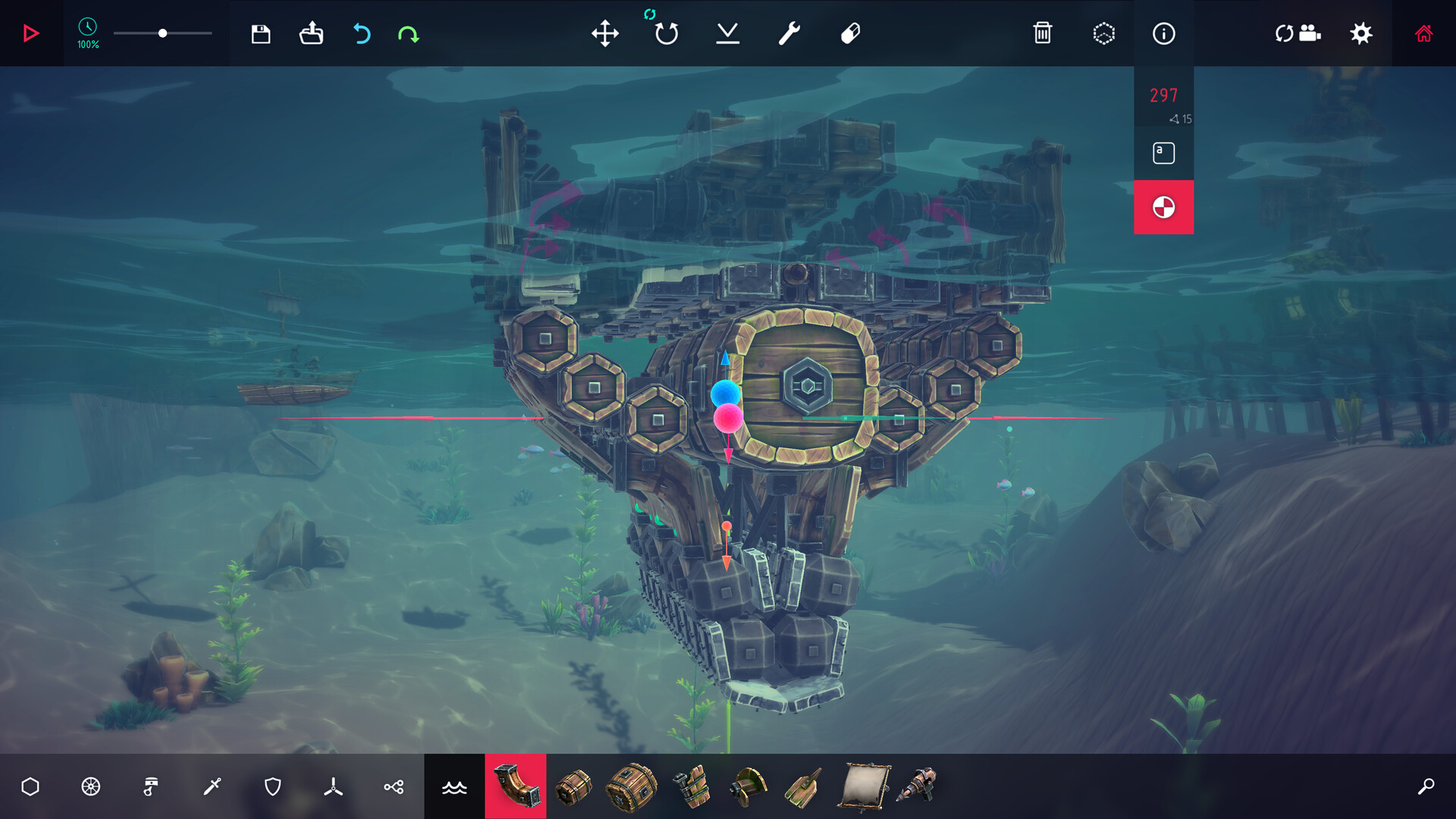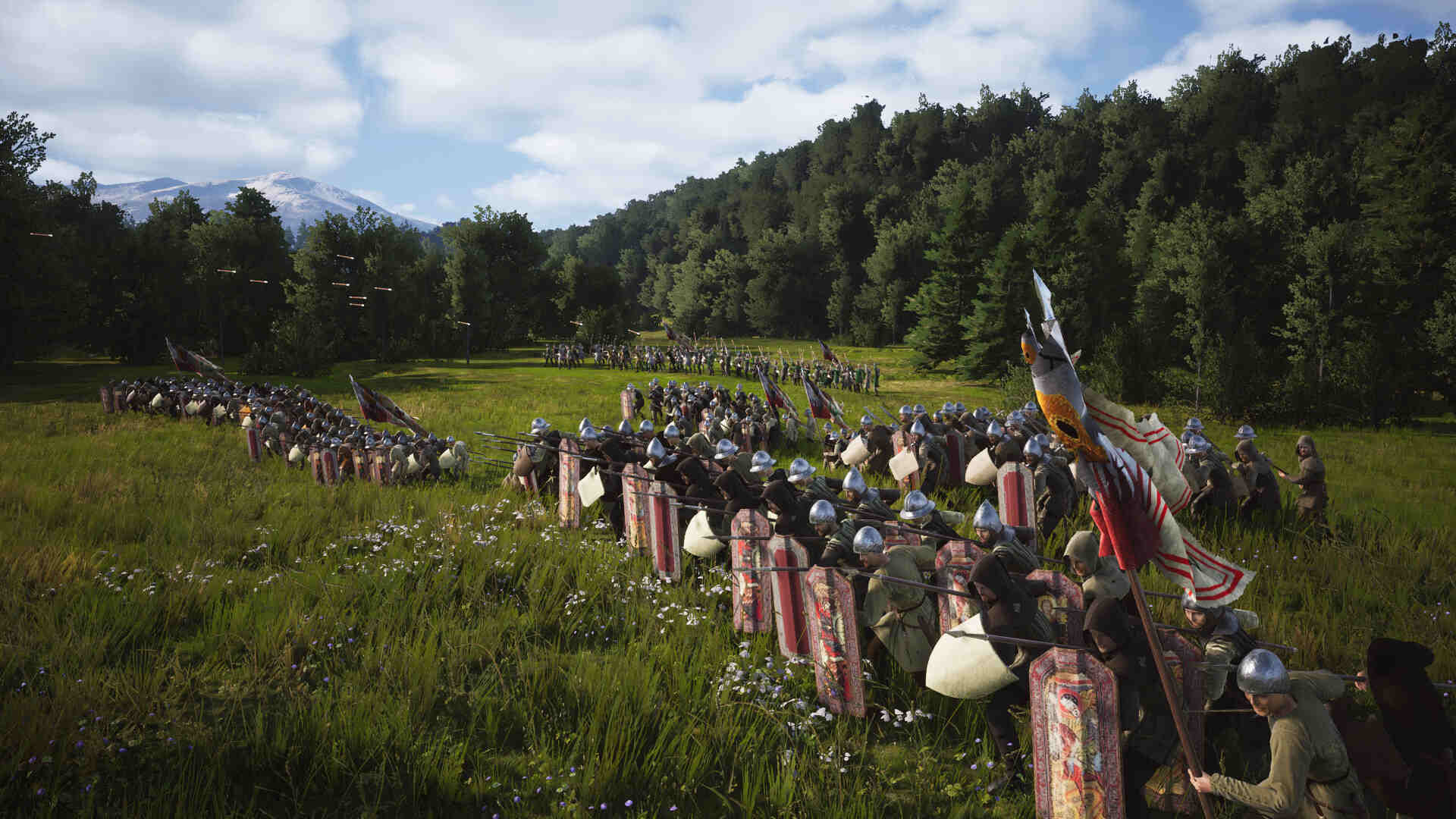
"In the industry nowadays, the games can live for so long." For Stefan Metaxas, publishing director at Besiege developer Spiderling Studios, that rings particularly true. This medieval sandbox game originally launched into early access more than nine years ago, but this month, it's back with a major - and hyper-complex - expansion.
Besiege is a physics sandbox that takes the collective expertise of centuries of medieval war engineers and allows players to make a mockery of it. Across a suite of military situations, players are tasked with creating their own war machines, and then successfully piloting them to mow down sheep, fight off soldiers, destroy castles, or even fly Da Vinci-style machines through troubling gauntlets. At its early access release in 2015, I fell immediately in love with it, but in the decade since then, I'd come to assume that Spiderling had quietly moved onto something new.
That assumption was wrong, however, and Besiege is back with The Splintered Sea, a full-scale expansion that takes the chaotic physics of the initial release and places it on the high seas. "Adding something like water to Besiege brings so many - like, infinite - possibilities of things that people can do with it," says Metaxas. Delivering on those possibilities is a high bar. The idea of a water map has been high on player wishlists for years, alongside far more traditional updates like multiplayer, or level editors. "The team always thought that it would be too difficult to add water because of the complexity of the game," Metaxas says.
Avast

Certain members of the team, however, never gave up on bringing "the fabled water map" to life. "It was always kind of bubbling away in the background [...] and Spiderling love prototyping. Eventually, studio co-founder Marco Marino and director Daniel Schmidt "just started to play around with things and tinker in the background, and it started to seem like it could be a possibility."

I went to war in Manor Lords all so my city-builder civilians could get a proper drink
That possibility has grown into a firm reality, and the hugely complex creations that defined Besiege's early, land-locked days are on full display in the Splintered Sea trailer. Functioning tall ships, submarines, sea-planes, and even a submersible shark-mecha all make an appearance, showing off just how much work had to go into bringing the game to a new environment. "We wanted to have the water be more than just a flat plane," explains lead producer Toby Hawkins, but getting functioning waves working against the physics of Besiege "was a monumental task."
In part, that's because of buoyancy. Every building block in Besiege has mass, but take to the water and the success of a creation isn't just about how much it weighs, but about how well it floats. Mataxas points towards the masterful creations of Schmidt, which now have to factor in balance and floatation far more than they did when they were on solid ground. "Everything had a mass to it already," Hawkins explains, "but for buoyancy, we had to go through and give everything some level of buoyancy and then rebalance the mass with that as well, so that things behave more realistically in water." Managing that, so that ships don't roll over after a powerful wave or simply sink to the bottom of the sea, is likely to be one of the more difficult aspects of building on water, to the point where Hawkins suggests getting to grips with a few principles of shipbuilding engineering.
That seems likely to be something that Besiege's long-term audience will be extremely comfortable with. Much like the Kerbal Space Program players who buried their heads in rocket science books, the Besiege community has been so heavily invested for such a long time that a little academic research is unlikely to deter them. A decade on from an early access launch that took nearly five years to hit a full release, it's clear that Spiderling knows how privileged it is to still be able to work on this game. After ten years, "we recognize that we're in a very lucky position to have such a beloved game," says Metaxas, "and we would love to continue working on it as long as the community still gets excited by it."
Sign up to the GamesRadar+ Newsletter
Weekly digests, tales from the communities you love, and more

I'm GamesRadar's news editor, working with the team to deliver breaking news from across the industry. I started my journalistic career while getting my degree in English Literature at the University of Warwick, where I also worked as Games Editor on the student newspaper, The Boar. Since then, I've run the news sections at PCGamesN and Kotaku UK, and also regularly contributed to PC Gamer. As you might be able to tell, PC is my platform of choice, so you can regularly find me playing League of Legends or Steam's latest indie hit.


